The concepts covered in this factsheet go beyond those seen in secondary school. It is intended as a supplement for those who are curious to find out more.
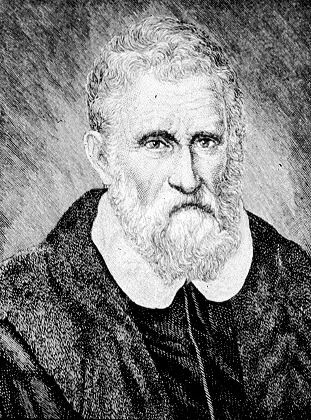
Marco Polo
Marco Polo was born in Venice in 1254. His father, a wealthy merchant, was travelling in the East when Marco Polo was born. When his father returned to Venice, Marco Polo was already around fifteen years old. Father and son returned to the Orient to discover unknown lands.
At this time, Venice was a prosperous trading city. Having established links with neighbouring territories, Venetian merchants benefited from the riches coming from the East (spices, precious stones, silk). Merchants developed important trading relationships with the Byzantines, who controlled the city of Constantinople, and the Muslims, who controlled the Silk Road.
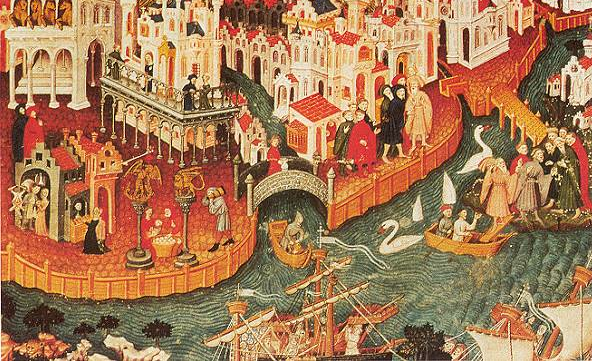
Venice in the 13th century
Europeans had access to the riches of Asia through trade. However, knowledge of the Eastern world was very limited. Traders did not sail much beyond Constantinople. Europeans knew nothing of the geography, culture or way of life of the countries further east.
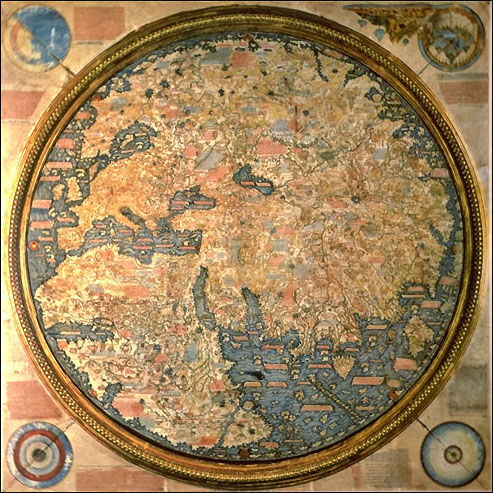
Representation of the world as imagined in the Middle Ages
Two trips have enabled us to forge links with faraway lands, as well as learning more about the world.
The first voyage was not made by Marco Polo, but by his father and uncle. They left Venice a few months before Marco Polo was born. The primary purpose of this voyage was strictly economic: to establish trade links and exchange goods.
However, this journey is going to be full of adventures that will stretch its duration and vary the route taken. The two brothers meet the emperor Kubilai Khan. The emperor was very curious about the visitors and wanted to learn a lot about their country, customs and religion. The Polo brothers also discovered a new culture: Chinese civilisation. They stayed there before setting off for Venice.
Before they left, however, the emperor asked them to return with around a hundred scholars. Their mission would be to teach European religion and science to the emperor's subjects. The Polo brothers returned to Venice in 1269, 15 years after their departure. The project demanded by Khan could not be carried out for several years, as problems related to the succession of the pope arose at the same time.
In 1271, Marco Polo's father and uncle set off again for China. This time, Marco Polo went with them. This journey, which lasted a total of 24 years, was to leave its mark on Marco Polo's life.
On the ship are the three men of the Polo family and two missionaries. The crew used both sea and land to reach their destination. Once in China, the men stayed for around 16 years. Throughout their stay, all the members of the expedition took the opportunity to explore the region. Marco Polo often went on missions on behalf of the emperor.
In 1291, the crew set sail for Venice. The return journey was once again a journey by sea and land. The explorers made stops in Baghdad and the Black Sea, among other places. They returned to Venice in 1295 after an absence of 24 years.
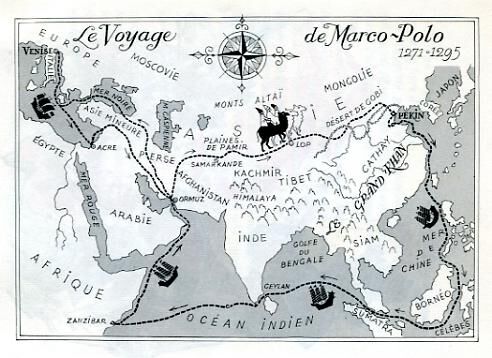
Map showing the route of Marco Polo's second voyage
Note: English image coming soon
After this voyage, Marco Polo tried to set sail again, but was captured and taken prisoner. After these adventures, he lived as a merchant in Venice until his death in 1324 at the age of 70.
When he was taken prisoner by a Genoese ship, Marco Polo set about writing his travel accounts. However, he did not write them himself. He took advantage of the presence of an author of romances of chivalry in his cell to dictate his recollections. These stories are therefore as much a representation of Marco Polo's memories as they are of the author's imagination. We owe Marco Polo the travel tales Devisement du monde, more commonly known as Le Livre des merveilles du monde in French. In fact, although Marco Polo was Italian, he dictated his stories in French.
The writing process began in 1298. Marco Polo described his memories, his encounters, the towns and landscapes he had seen. He gives details of the fauna, flora, people, customs and cities. In his stories, he recounts the two voyages: his father's and his own. He explains the travel routes as precisely as possible. He tells it all with an excellent sense of observation mixed with the naivety of someone facing an unknown world.
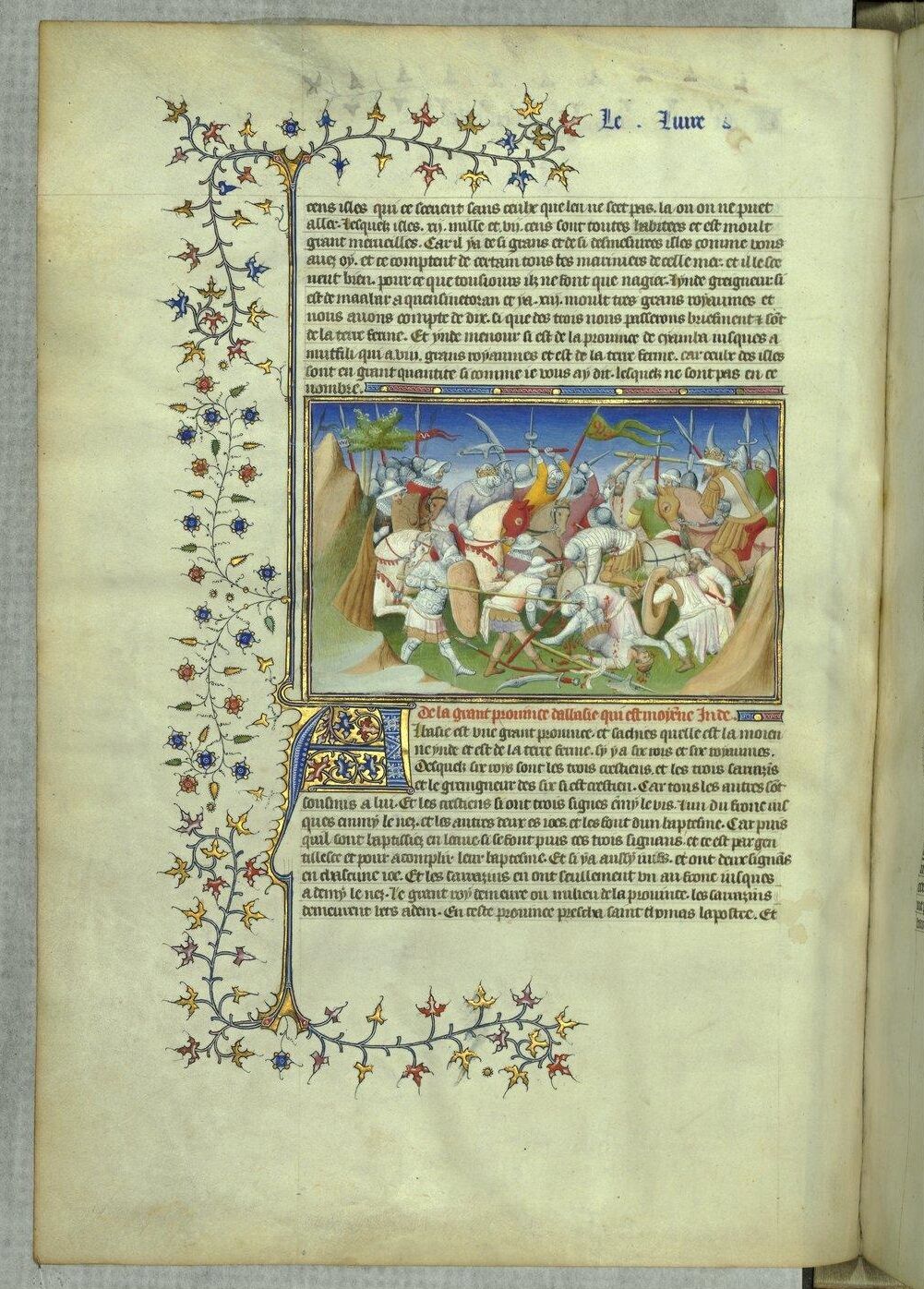
One of the pages from Marco Polo's travelogue
The original text of Marco Polo's stories has been lost, but some 150 manuscripts have survived, translated into every language.
The precision with which Marco Polo described routes and landscapes enabled more accurate maps of the world to be drawn up. In fact, some of the maps of the time used names and routes taken directly from Marco Polo's accounts. Many atlases include quotations from Marco Polo. Polo's travels paved the way for the great voyages of the Renaissance. Marco Polo's explorations inspired many navigators and explorers of later centuries, including the famous Christopher Columbus.
Some people today question the veracity of the events recounted in Marco Polo's stories. Some even doubt that he actually set foot in China. These people point to the fact that there is no proof that he actually went there. What's more, there are a number of gaps in his accounts. Marco Polo never mentions the Great Wall of China or the fact that the Chinese eat with chopsticks and that women have bandaged feet. Nor is there any mention of the clothes and physiognomic features peculiar to the Chinese.
These gaps may be due to the fact that Marco Polo dictated his travels to someone who had seen none of it. The same applied to the copyists, who had to transcribe descriptions of things and people they had not seen. The illustrations in the text clearly show this reality: the clothes and facial features of the characters have nothing to do with the Chinese. Faced with an unknown reality, the copyists and illustrators probably modified the descriptions to produce a result that was faithful to what they knew.
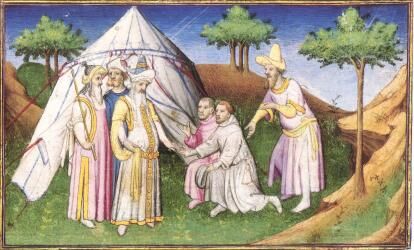
This image is an illustration of Marco Polo's story. The Asians shown here are wearing European clothes and do not have the typical Asian features.
In fact, there is absolutely no proof that Marco Polo actually travelled to China, just as there is absolutely no proof that he never went. Whether he went or not, it cannot be denied that Marco Polo opened Europe up to parts of the world it did not know, gave others a taste for adventure and thus paved the way for the great explorations.